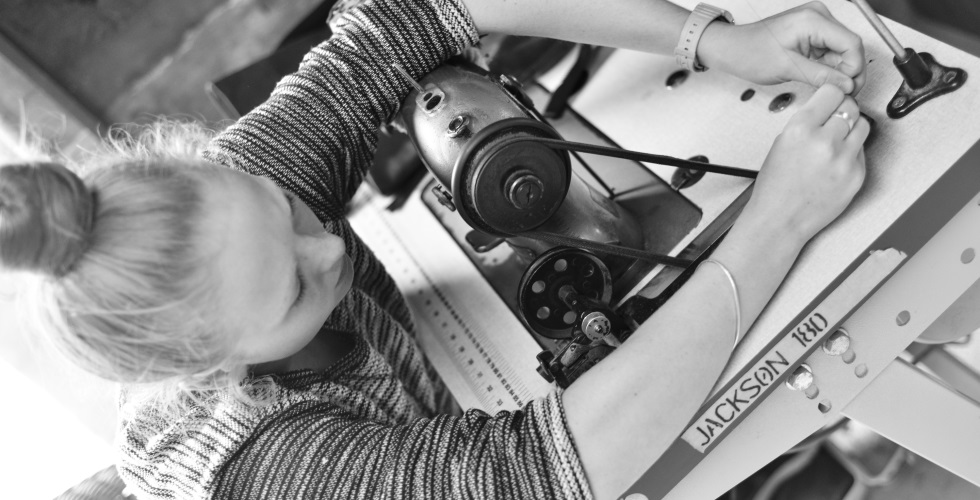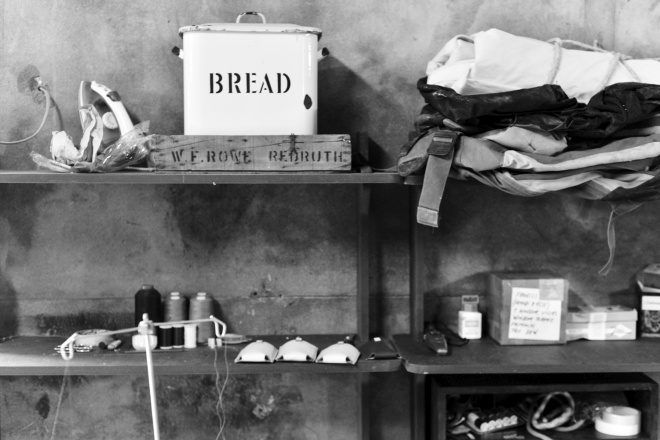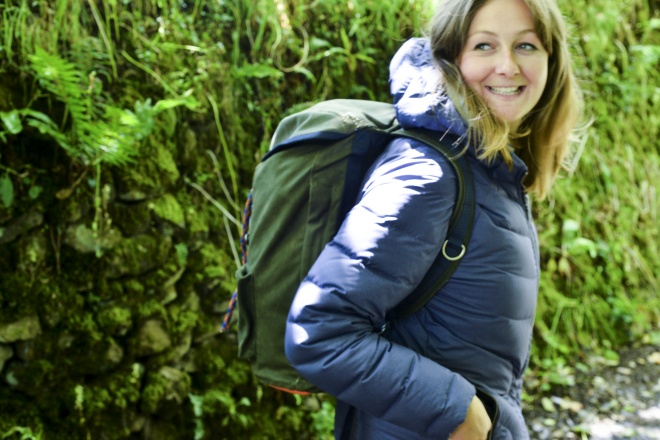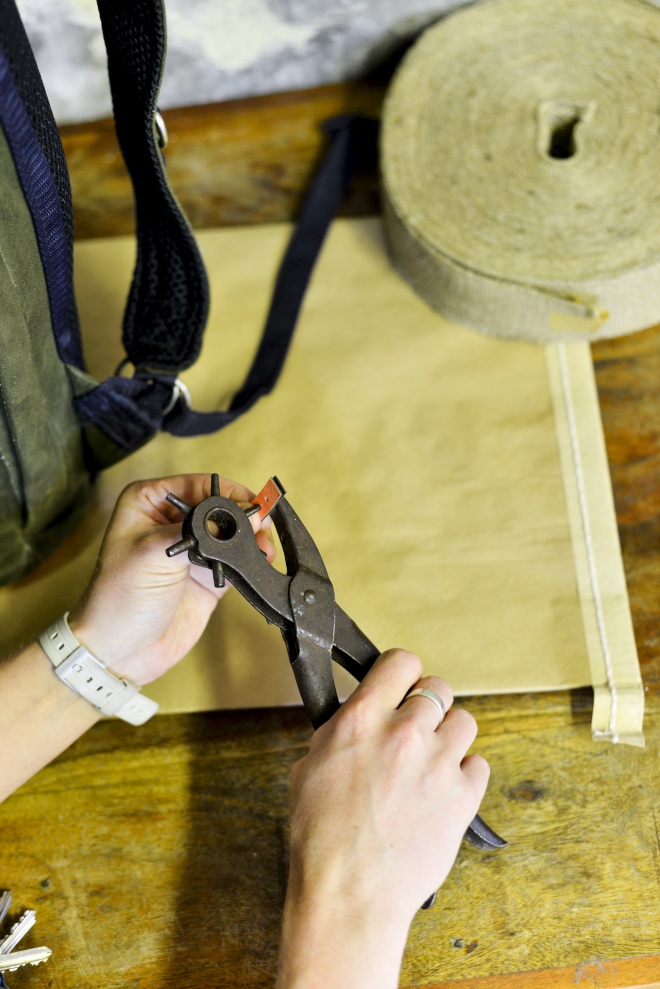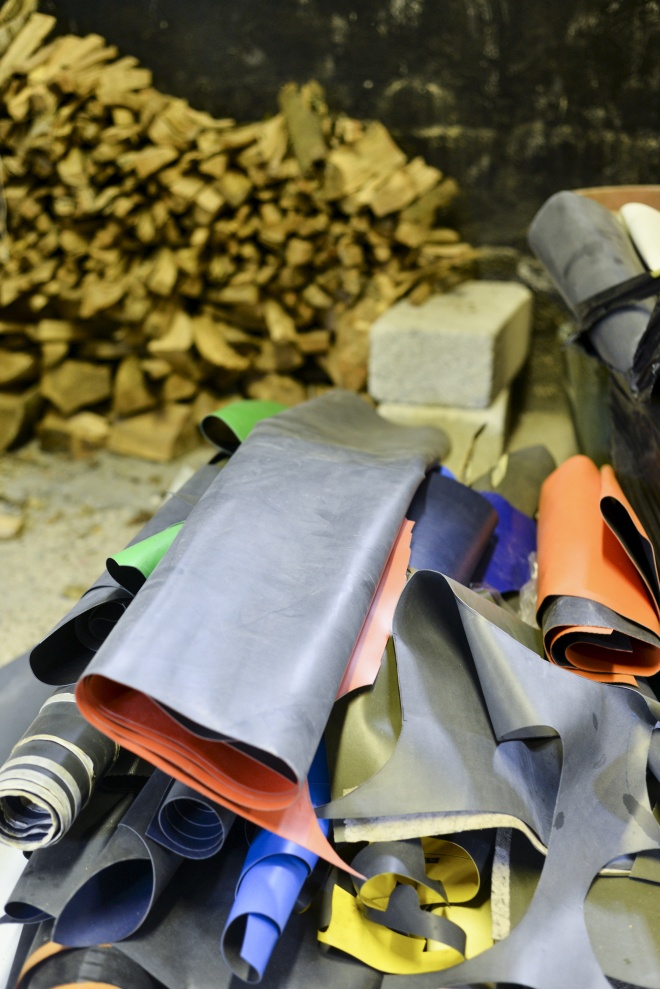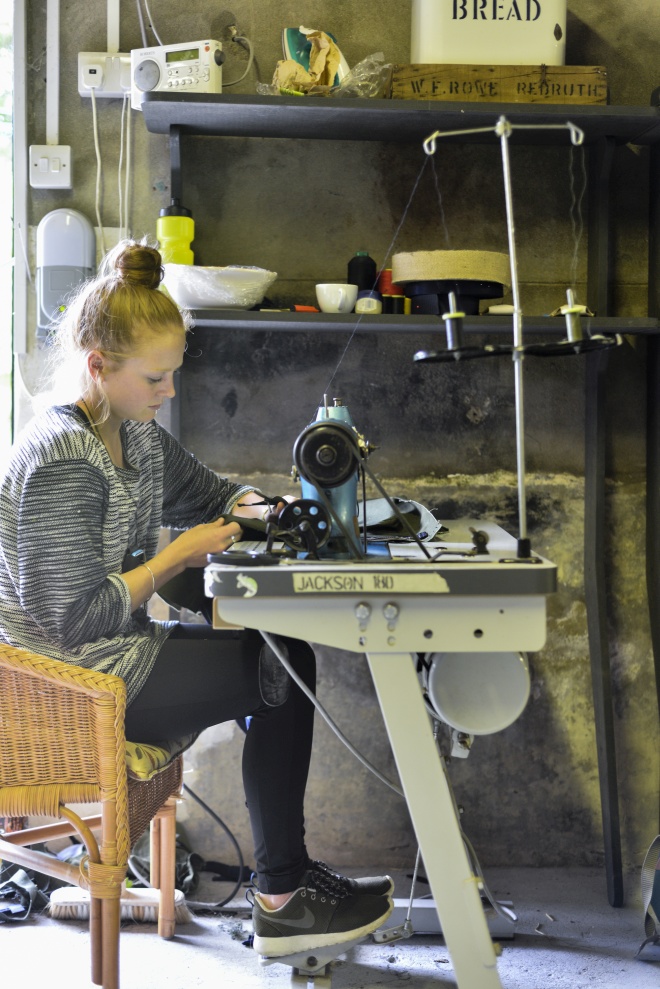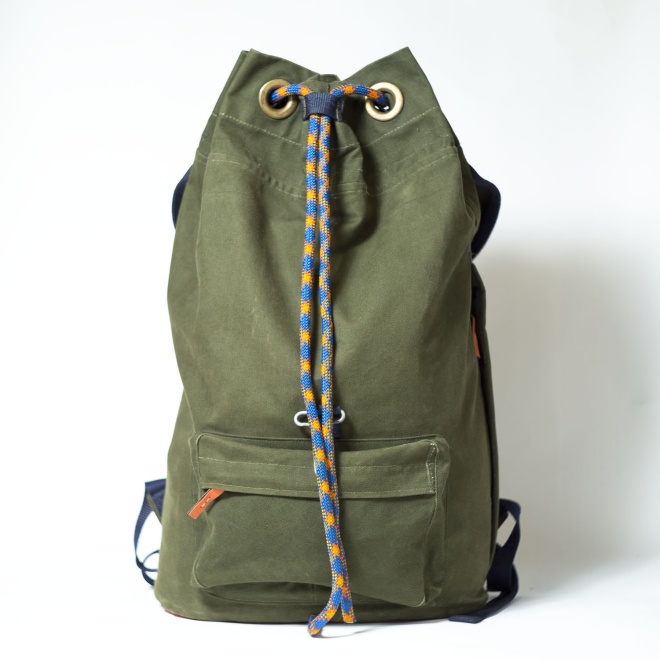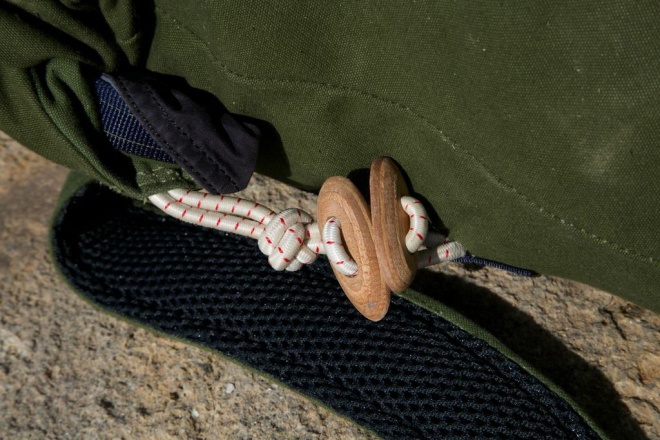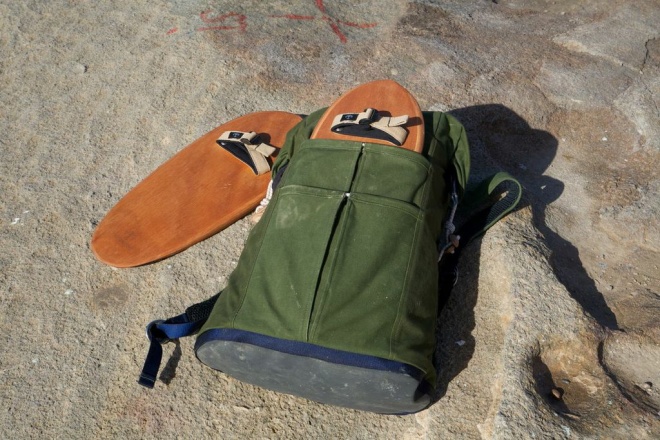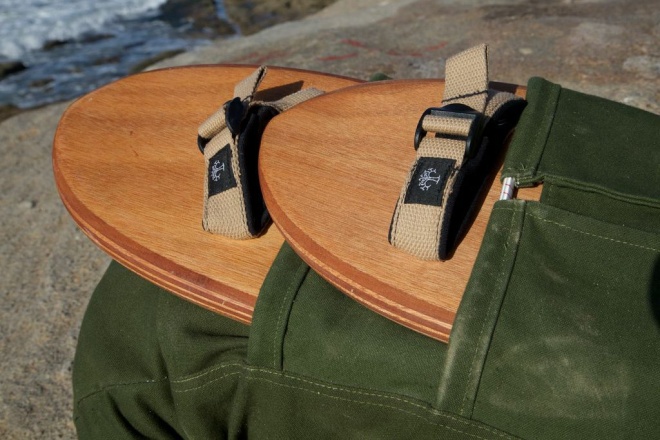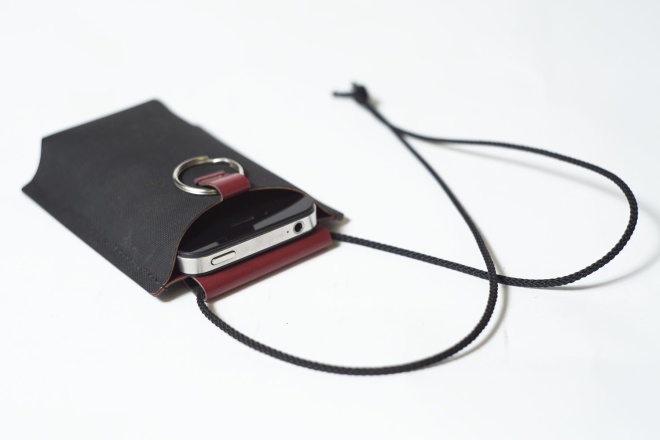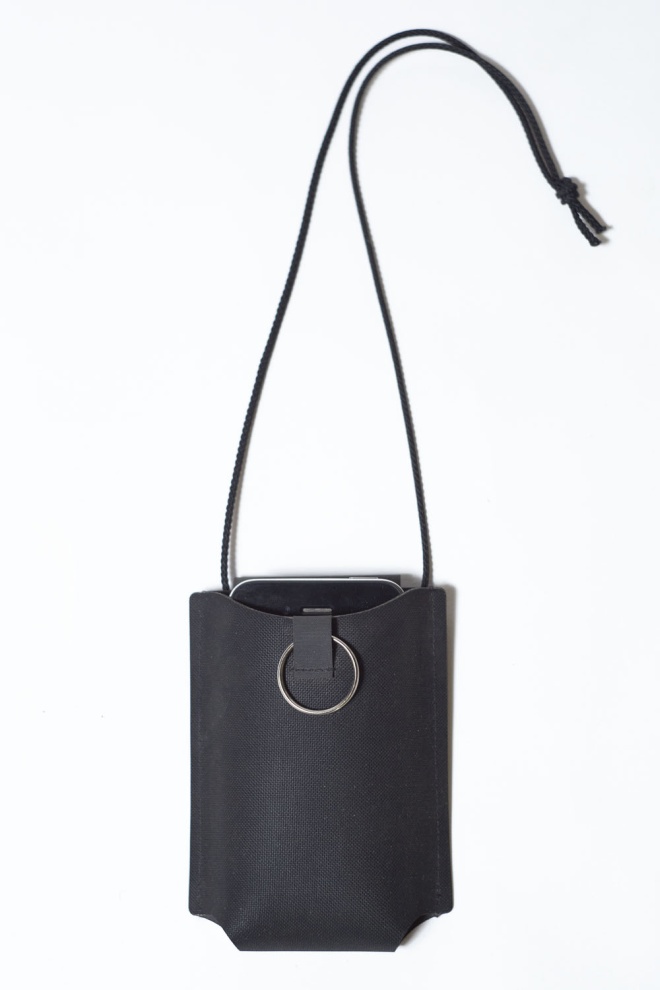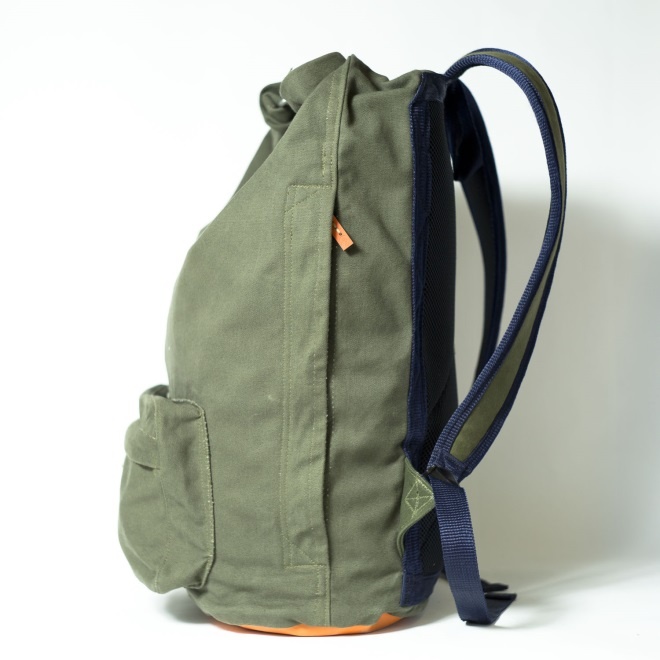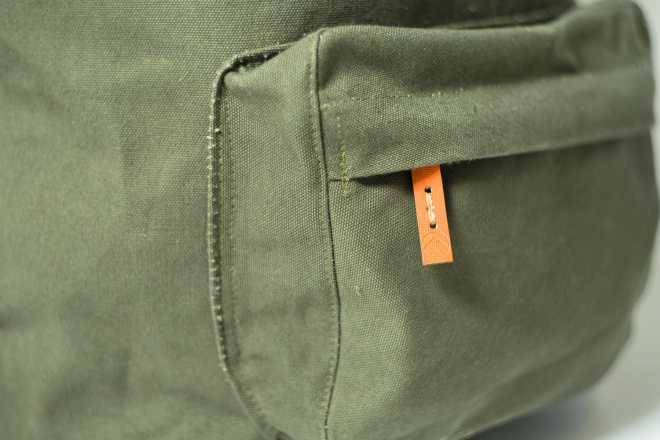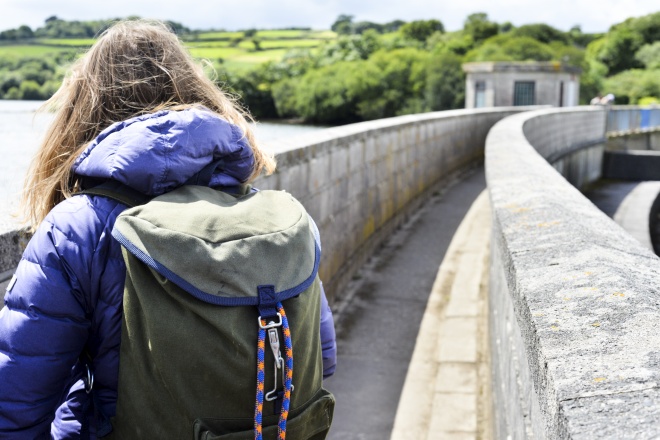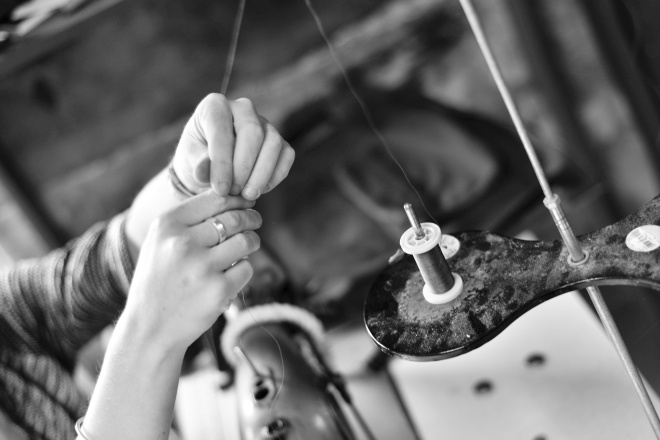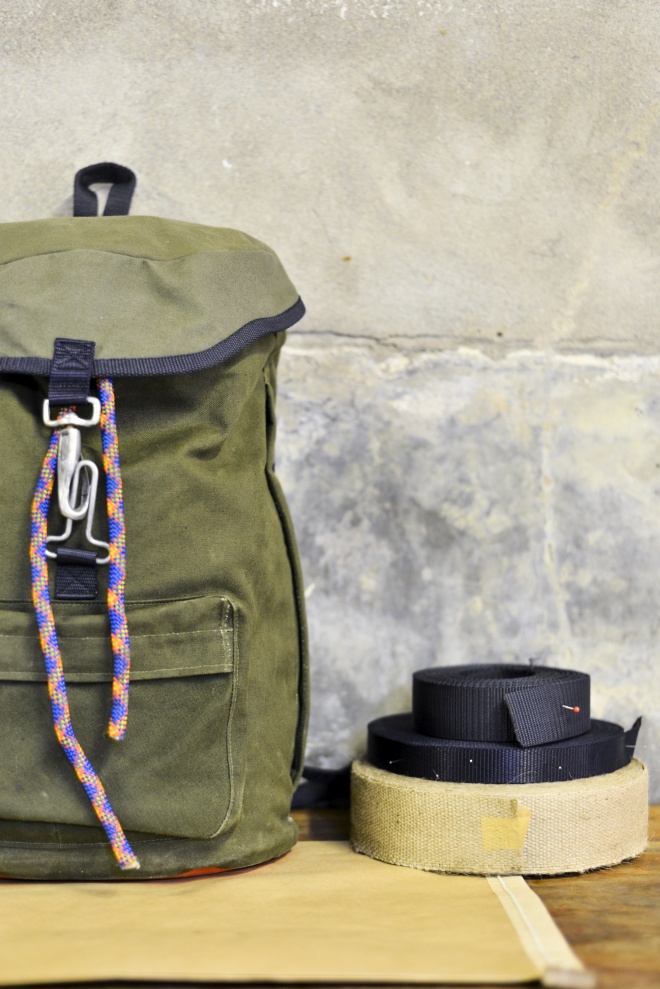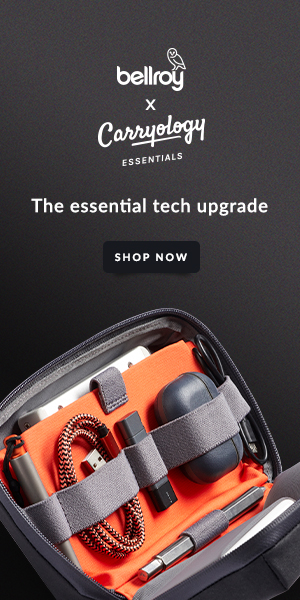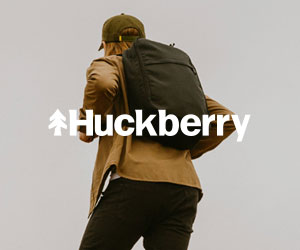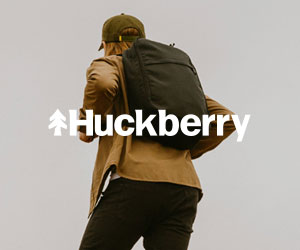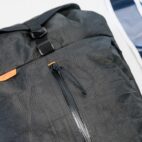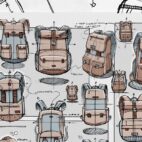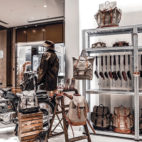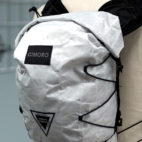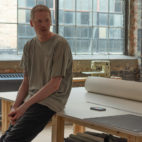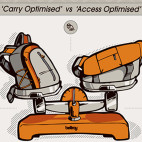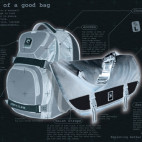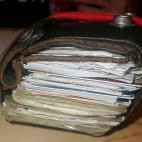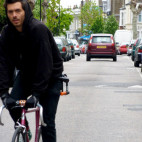Interview with Francli
Francli was born of a desire to create craftwear that embodies quality and longevity. Focusing on functionality and minimalist aesthetics, Francli pieces are designed to stand the test of time, becoming items that are cherished rather than thrown away. Though the brand is still young, the founders Alison Goodman and Frances Baseley have already established a number of collaborations with diverse rural craftspeople in order to create workwear and accessories that have purpose and solve a problem. We dug down into the details with Ali in order to discover more about this passionate Cornish brand…
Can you provide us with a bit of background on yourself?
The Francli studio is just the two of us, myself (Ali) and Franki. We are both graduates of Falmouth University where we studied Performance Sportswear Design and Fashion Design respectively.
In Falmouth we clicked on a shared love of Cornish beaches and terrible puns – most of our time away from the studio was spent scrambling around the local coastlines, shooting air rifles and building fires. We also connected on our obsession with Scandinavian design values, Japanese aesthetic theory and the rich history of military and workwear clothing.
Francli is a combination of our names, we like how it sounds because we wanted to create a brand that’s simple and honest. It’s also fitting because we’re pretty inseparable! We live together and work part-time in the same restaurant. It’s a very close partnership, one that we’ve been warned about because it can be dangerous to mix personal and business relationships, but Francli wouldn’t have grown so organically and passionately without it.
After finishing our degrees we both moved to London for internships, I was in studio placements while Franki worked PR and marketing roles. It was an amazing six months – surrounded by the hectic London design scene and meeting lots of interesting creatives. Our favourite hobby was exploring the Vintage Showroom archive in awe – they have a huge collection of military, work and sports menswear that covers the whole of the early mid 20thcentury. Looking back, that’s definitely where the first ideas for Francli started to bubble.
Although London was inspiring, it started to get very claustrophobic and there was a limit to our creative freedom in internships. We found ourselves in a dark pattern of commuting and working with no money or free time. We were too susceptible to city anxiety and materialistic pressure and longed to be back in Cornwall where the cold sea can cure any bad mood, lethargy or hangover! That’s when we started to imagine what it would be like to direct our own work…
Tell us about the inspiration for starting Francli, and what market niche were you trying to fill?
Francli is a culmination of so many things – our shared design influences and our comparison of city and rural life. The key thing for us is being able to both live by the sea and work with our hands.
As a brand we want to promote this work/life balance and show that you don’t have to accept typical business methods and structures. There’s a gluttonous and trend-obsessed side to the design industry that is wasteful and unhealthy. We want to revive the pride of British craft by producing work that has integrity, mindfulness and longevity.
We don’t want to be preachy and force a lifestyle ideal on anyone. We’re just aware that there is a market out there that has become frustrated with throwaway attitudes and is looking for alternatives. This combined with a volatile economic climate and recent consumer scandals has triggered an emergence of businesses that do things differently. They value quality and transparency over fashion fads, and are reconnecting with the natural world, such as Hiut Denim, Miscellaneous Adventures and Finisterre UK.
Our mission is quite simple; Francli Craftwear is a slow design studio that makes beautiful and effective tools for outdoor makers. They are the people who refuse to be sucked into a routine of all work and no play, the people who take control and live and work where they want to, the people who challenge, innovate and make their own happiness.
Words like local and heritage have been widely used in the last five years. What do these words mean to you? How does your company embody them?
There are a lot of marketing trends out there that have overused important words such as artisan, craft, local and heritage. Hopefully these terms haven’t become boring for consumers because they represent really good values.
We champion local design and production because it has many benefits a global market can’t always offer. It would be silly to try and denounce an international market place; it has allowed consumers to experience and share so much more than they could before. However, the selfish appetite of fast fashion can be dangerous, such as the Rana Plaza tragedy. Refocusing on local manufacture highlights these wasteful and unethical problems and offers a safer, more controlled alternative.
Local is about transparency and trust, knowing where your stuff comes from and how it’s made. With Francli we want a more personal relationship with our customers, where we share everything with them and listen to their feedback. To do this we need to keep things close to control our quality and waste. We are a celebration of craft and by growing the business from this core we will hopefully stop knowledge and skills from being lost to offshore production.
We are directly influenced by our natural surroundings and the impressive history of durable, functional workwear. This makes for a rustic aesthetic that references methods and designs of the past. In this respect we are proud to be described as a heritage brand because it means experience and quality. However, I describe Francli as a contemporary brand, one that is reacting to contemporary issues and developing products that are fresh and desirable for a modern consumer.
Where do you source your materials?
One of our production methods is upcycling, which makes for an unusual sourcing process! We salvage materials from a variety of places, both pre and post-consumer waste, and always look for strong, durable qualities.
We have a good supply of hardwearing canvas and cottons from unwanted or damaged army surplus, for example our rucksacks are mainly constructed by upcycling army kit bags.
The leather we use is given to us in a range of sizes, shapes and colours. They are the waste product of upholstering classic cars that are not big enough for the patterns of their interiors but still have potential for other uses. We have mainly used this for our workwear projects but have some new leather accessory samples in the pipeline.
Through a chance meeting followed by an interesting conversation, we discovered a unique material that is shipped off in the skip-load to landfills every fortnight. Hypalon is used to construct boating inflatables; it is UV resistant, waterproof and strong. As the pieces used to build these boats and RIBs are pretty large, off-cuts to them are huge pieces of fabric to us! We utilise its protective qualities for our rucksack bases and security accessories.
We try to give new life to what would be wasted materials but it’s not just the sustainable aspect that’s satisfying. Upcycling makes for a challenging design approach where we have to react to each source differently, getting to understand the characteristics of the material and how they can be manipulated before deciding how they can be applied. It can be laborious and could be seen as limiting but it actually reveals design opportunities and ideas we might not have found by buying fresh off the roll.
Tell us about collaborating, doing special projects and working with other partners.
What gets us excited and inspired the most is interacting with other creatives – how the power of collaboration can push your ideas further and faster than they would go on their own. Because we’re designing for outdoor makers, it’s really important that we understand their lifestyles and work closely with professionals to make sure we’re developing products that perform exactly how they need to.
We are currently developing the second sample of a hand plane rucksack for Driftwood Surfboards. Last year, Dave Forsyth launched a line of digitally crafted and hand-finished planes for body surfing and needed a pack that would carry all his stuff for a session at the beach. The brief was very specific and required a fine balance of function and aesthetics. The pack would be vulnerable to a range of British weather and terrain so needed to be protective and durable. We were also approaching the surf market, one that’s particular about how things look so the overall design had to be desirable.
For the first sample we visited the Driftwood studio to both learn how the hand planes are made and discuss the specifications needed. We also combined some of his working techniques with ours to make toggles from reclaimed wood that fasten the adjustable roll-top closure. Since making the first sample, Dave has been vigorously testing it, including a month’s surf trip around Morocco. We have now collected his feedback and are working on a more refined version.
One of our most innovative ventures is The Fresh Fields Project where we collect, deconstruct and reuse festival waste. Last year Kurt Jackson, the resident artist of Glastonbury, saw the potential in all this waste and asked us if we could do something with it. Together we created a line of security accessories and carry products for outdoor use, using old tents and wellies. It was a challenging project because of the dirt and damage of the various objects we found but they still had so much more to offer than being chucked away for good. Since then we have incorporated these materials into our essentials range, launching limited edition versions of our phone cases.
What is your EDC (Every Day Carry)?
We each use the original samples of the Activity Rucksack and Kit Rucksack. Although the designs have evolved a lot since we made them, they still have the same functions and features.
I cycle a lot, to and from our farm workshop and about town, so I like my pack to be simple and light. The Activity Rucksack neatly carries my usual studio kit – sketchbooks, small tools, a few layers, some food and water and sea swimming stuff (I strap my towel under the flap closure). I’m quite impatient so the side zip means I can get to everything quickly when I’m on the go.
Franki is a more patient explorer than me, she likes long hikes and camping trips, so sometimes needs to pack big. For this, the adjustable size of her Kit Rucksack comes in pretty handy. The volume of the rucksack lets her fit in all her clothes and supplies for a week away, and still qualifies as hand luggage!
It’s also very rare to see us without our iPhone cases around our necks. We’re both quite scatty and lose things a lot so you could say the design came from a selfish need! Now we have our phones, cards, some change and keys on hand at all times.
What key insights drive your products and design?
Our key insight is to make quality tools that last a lifetime, products that are helpful, reliable and resilient companions. With this in mind, we approach every new product idea, project or commission from a purely logical and functional standpoint. If the design doesn’t answer a question or solve a problem, we have gone off track.
Although our priority is purpose-led design, this doesn’t mean that we don’t value aesthetics. We know that for something to be cherished and last a long time, it also needs to be desirable. We favour a clean, timeless look, one that embraces the marks of use and age.
What are some other brands you admire, that you think are doing great work?
Hiut Denim are pioneers of building a brand of quality, transparency and admirable stories. We really admire their emphasis on craft and longevity and ambitious goal of reviving the jeans industry in Cardigan Bay. They have a clear mission and communicate it really well; we hope that we can earn the same respect and following that they have achieved.
We also really admire the work and ethos of Trakke. They have organically grown their brand using British skills, an understanding of good materials and putting function first. We share a lot of similarities in how we started and it’s inspiring to see how they’ve evolved.
How is your first year going? How much have you learned and grown and what does the future hold for Francli?
We started Francli as a three-month project, our goal was to create a small collection inspired by the things we love as a better addition to our portfolios than another gruelling internship. We were quite wrong. The reaction to what we were doing was really flattering and as inquiries and commissions started to come in, we wondered if it was possible to do something this fun as a proper income. From this point it snowballed pretty quickly, if we were told back then that a year later we would be committed to Francli long-term with an active online shop and multiple creative projects, we probably would have laughed.
Admittedly it’s been really hard, especially getting our heads around the logistical and financial side of setting up on your own. In many ways we were way too inexperienced to do it but it’s amazing where some momentum, good mentors and just having a go can take you. Sometimes it feels like we’ve been doing this for way longer, just because it’s been such a drastic learning curve.
In the short space of a year, Francli has matured so much – we have refined our purpose, our aspirations and how we are going to achieve them. We still have panic moments where we feel like we’re taking the wrong direction or just floundering under the workload! But we know that these things can take years to evolve so as long as we constantly analyse what we’ve done, cultivate what we’re doing and look for ways to innovate in the future, we will be okay – ‘We’re not experts but we are explorers’.
Our immediate goal is to continue to search out exciting creatives who can’t find what they need in the current market to inspire and develop our product range in the Francli Shop (I’ll be taking a painting roll sample to Scotland next week to test out in the mountains with artist Simon Watkins).
We are also expanding the Francli Studio so we can offer a design service for bespoke craftwear – whether it’s one-off pieces for customers who want something more specific or a small line of tools/uniforms for craft businesses. We will be presenting the results of our first commission with Clay’s Barbers at the end of the month.
We want to be able to quit our part-time jobs and build a small but strong team to take Francli further. We want Francli to become an international brand, one that is recognised as a leader of quality craft equipment. The overall goal hasn’t changed from when we first started out – to shape a worthy and fulfilling career for ourselves that gives us creative freedom in beautiful and inspiring surroundings.
Photo Credits:
Studio and location shots – Mathew Coupe
Product Shots – Greg Dennis
Driftwood Shots – Gavin Gallagher





 Carry Awards
Carry Awards Insights
Insights Liking
Liking Projects
Projects Interviews
Interviews
